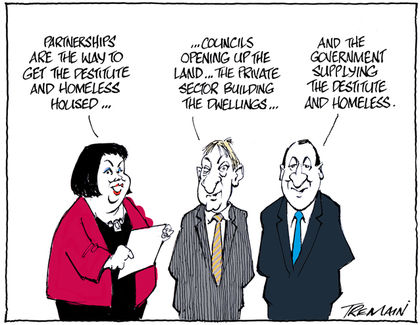Along with the Budget itself, Budget day also gives the public a new peek into how the government thinks the country is going to do over the next few years. These are the Treasury’s forecasts, and they sit beneath every decision the government makes.
As part of this, Treasury has been publishing house price forecasts for the last three years or so. They’re woefully bad, constantly underestimating how high house prices will soar.
The last year where we have real data now is 2014/5 (released today), when house prices rose 11.1%. As late as May 2015, when that fiscal year was already over, Treasury was forecasting house prices or only 6.8%. They were miles out, even after the fact.
For this year and the 2016/7 year, Treasury have had to continualy revise their forecsts up and up and up as we draw nearer.
For the 2015/6 year just ended, Treasury currently thinks house prices rose by 8.9%. A year ago, they thought that number would be 5.2%. A year before that, 4.3%. It’s the same story for the 2016/7 year, with the forecast price rises changing from 2.5% to 3% to 7.7% as we get closer to the time.
So, why does this matter?
Well it matters because of the government's bumbling inaction on the housing crisis. It seems Treasury really is telling the government there’s no housing crisis, via its forecasts, and the government’s all to willing to listen.
Over 2018 to 2020, Treasury forecasts house prices in New Zealand will rise only 0.1% a year faster than general inflation, assuming the government’s current policies continue.
That’s a laughable forecast.
Anyone who believes house prices will stabilize completely, all on their own, while bumbling Nick Smith is still at the helm, needs their head read.
I will happily take a $100 charity donation bet with any blogger or Treasury official who want to stand behind the Treasury’s forecasts on this.
On a similar vein, all Treasury’s projections for the government are also based on an assumption that the global dairy price will skyrocket 55% in the next two years, going from its current rate of USD2,200 a tonne to USD3,400 a tonne.
Remember the Goldman Sachs report warning of a five year global dairy glut? Treasury’s clearly forgotten.
What ever happened to the small-c conservative accounting convention of being cautious about revenue before it’s real?
Forecasting a 55% increase in the dairy in two years seems almost as rose-tinted as forecasting stable no more skyrocketing house prices.
Ultimately the government’s bad decisions are their responsbility alone, but I do wonder whether there’s a bit of “garbage in, garbage out” going on here, too.
